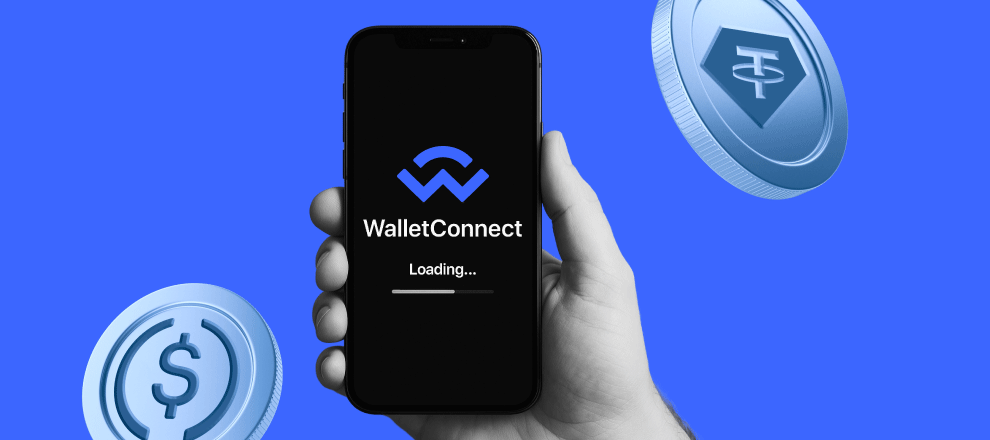In the WalletConnect network, 72% of payment traffic is now attributed to dollar stablecoins, as institutional and retail market participants move toward mass adoption of on-chain solutions.

According to a report by Reown, the on-chain payments market entered a rapid scaling phase, demonstrated by growth in user numbers, transactional activity, and institutional integrations. Stablecoin transactions on Binance Pay increased by 225% throughout 2024, while 72% of all payments on the WalletConnect network are now dollar-pegged stablecoins. USDC dominates retail scenarios (38% of all payments), whereas USDT is used primarily by large institutional players (34%).
WalletConnect is an open protocol that enables secure connections between crypto wallets and decentralized applications (dApps) across various blockchains. It supports over 700 wallets and has more than 45 million users.
Key data and trends:
- 34% of respondents use crypto for payments, up 14% compared to the previous year;
- 37% consider payments a key driver for cryptocurrency adoption;
- 51% of crypto holders aged 18–34 own stablecoins, nearly double compared to a year ago;
- 750 million users already have access to stablecoins through PayPal, Revolut, Robinhood, Venmo, and others.
The average institutional payment volume on the Ethereum network is $3,000–$4,000, while retail payments more often occur via Polygon and Base, averaging $100–$300.
Geography and business cases:
- The U.S., Germany, the U.K., and the Netherlands account for more than 50% of total on-chain transaction volume.
- In Brazil, companies like Mercado Bitcoin are replacing traditional payment rails with stablecoins, reducing fees from 5% to less than 1%.
- Kaia launched USDT support in LINE and KakaoTalk apps, reaching 250 million users across Asia.
- In Africa and Latin America, stablecoin usage for migrant worker remittances reaches $10 billion annually, with fees between 0.5% and 3%.
Regulatory shift:
- The U.S. passed the GENIUS Act, establishing a federal legal framework for payment stablecoins.
- Europe is developing MiCA infrastructure but lacks unified practices so far.
- Banks are beginning to issue their own digital dollars — over 20 new stablecoins are forecast to emerge in the coming years.
Jess Houlgrave, CEO of Reown, predicts that the next 100 million users will discover cryptocurrencies not through trading but via payment scenarios integrated into daily life.
A similar view was previously expressed by Max Krupyshev, CEO of CoinsPaid, who noted that stablecoins are becoming a universal payment method, especially in countries where the U.S. dollar is used unofficially and traditional banking systems fail to meet the financial needs of businesses and individuals.
Сообщение On-Chain Stablecoin Payment Volume Grows 225% YoY появились сначала на CoinsPaid Media.











